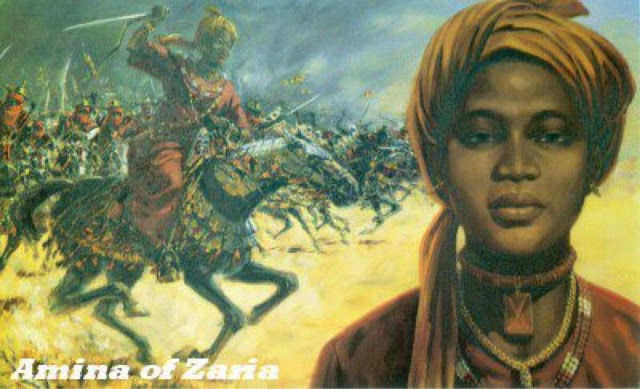Sarauniya Amina of Zazzau
In Muslim Africa, several women excelled in various fields. Among them, Queen Amina of Zaria (1588-1589). She was the eldest daughter of Bakwa Turunku, who founded the Zazzau Kingdom in 1536. Amina came to power between 1588 and 1589. Amina is generally remembered for her fierce military exploits. Of special quality is her brilliant military strategy and in particular engineering skills in erecting great walled camps during her various campaigns. She is generally credited with the building of the famous Zaria wall.
Amina of Zaria, the Queen of Zazzua, a province of Nigeria now known as Zaria, was born around 1533 during the reign of Sarkin (king) Zazzau Nohir. She was probably his granddaughter. Zazzau was one of a number of Hausa city-states which dominated the trans-Saharan trade after the collapse of the Songhai empire to the west. Its wealth was due to trade of mainly leather goods, cloth, kola, salt, horses and imported metals.
At the age of sixteen, Amina became the heir apparent (Magajiya) to her mother, Bakwa of Turunku, the ruling queen of Zazzau. With the title came the responsibility for a ward in the city and daily councils with other officials. Although her mother's reign was known for peace and prosperity, Amina also chose to learn military skills from the warriors.
Queen Bakwa died around 1566 and the reign of Zazzau passed to her younger brother Karama. At this time Amina emerged as the leading warrior of Zazzau cavalry. Her military achievements brought her great wealth and power. When Karama died after a ten-year rule, Amina became queen of Zazzau.
She set off on her first military expedition three months after coming to power and continued fighting until her death. In her thirty-four year reign, she expanded the domain of Zazzau to its largest size ever. Her main focus, however, was not on annexation of neighbouring lands, but on forcing local rulers to accept vassal status and permit Hausa traders safe passage.
She is credited with popularizing the earthen city wall fortifications, which became characteristic of Hausa city-states since then. She ordered building of a defensive wall around each military camp that she established. Later, towns grew within these protective walls, many of which are still in existence. They are known as "ganuwar Amina", or Amina's walls.
